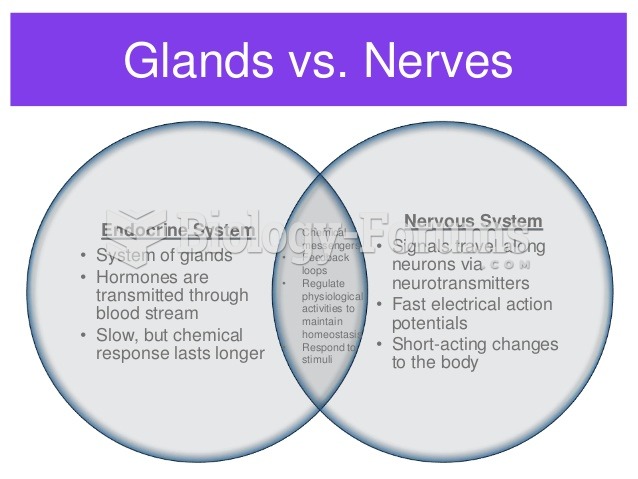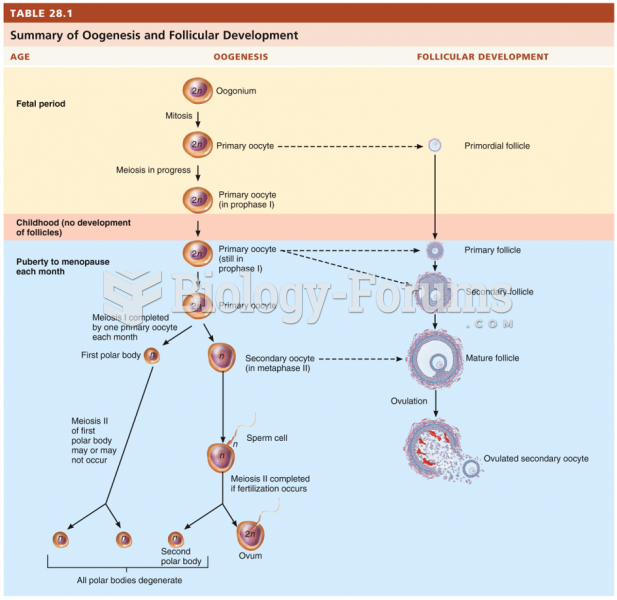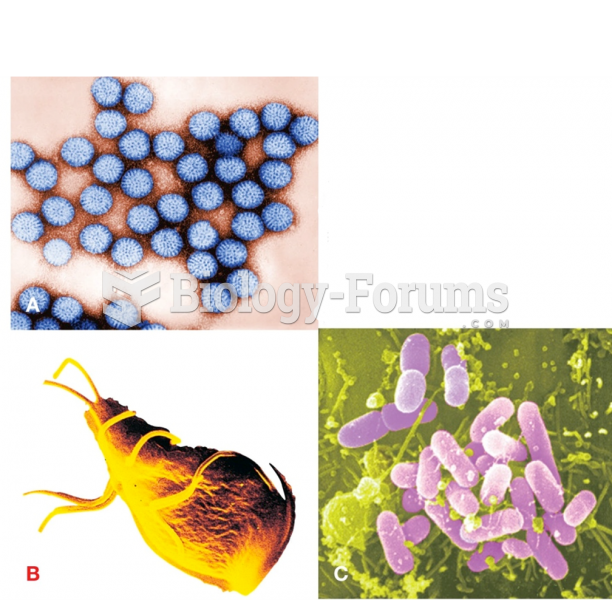|
|
|
Drying your hands with a paper towel will reduce the bacterial count on your hands by 45–60%.
Human stomach acid is strong enough to dissolve small pieces of metal such as razor blades or staples.
A seasonal flu vaccine is the best way to reduce the chances you will get seasonal influenza and spread it to others.
As the western states of America were settled, pioneers often had to drink rancid water from ponds and other sources. This often resulted in chronic diarrhea, causing many cases of dehydration and death that could have been avoided if clean water had been available.
Looking at the sun may not only cause headache and distort your vision temporarily, but it can also cause permanent eye damage. Any exposure to sunlight adds to the cumulative effects of ultraviolet (UV) radiation on your eyes. UV exposure has been linked to eye disorders such as macular degeneration, solar retinitis, and corneal dystrophies.







